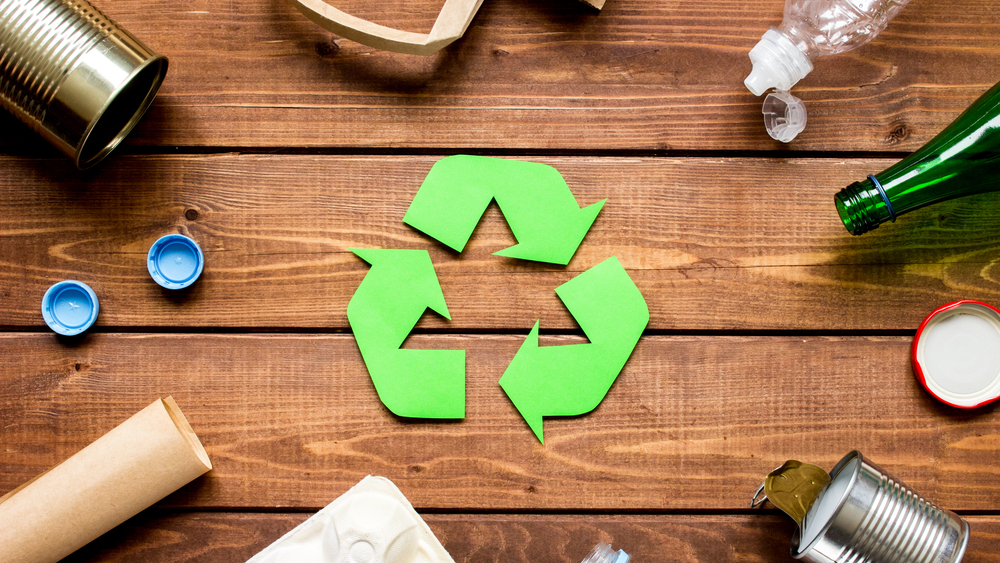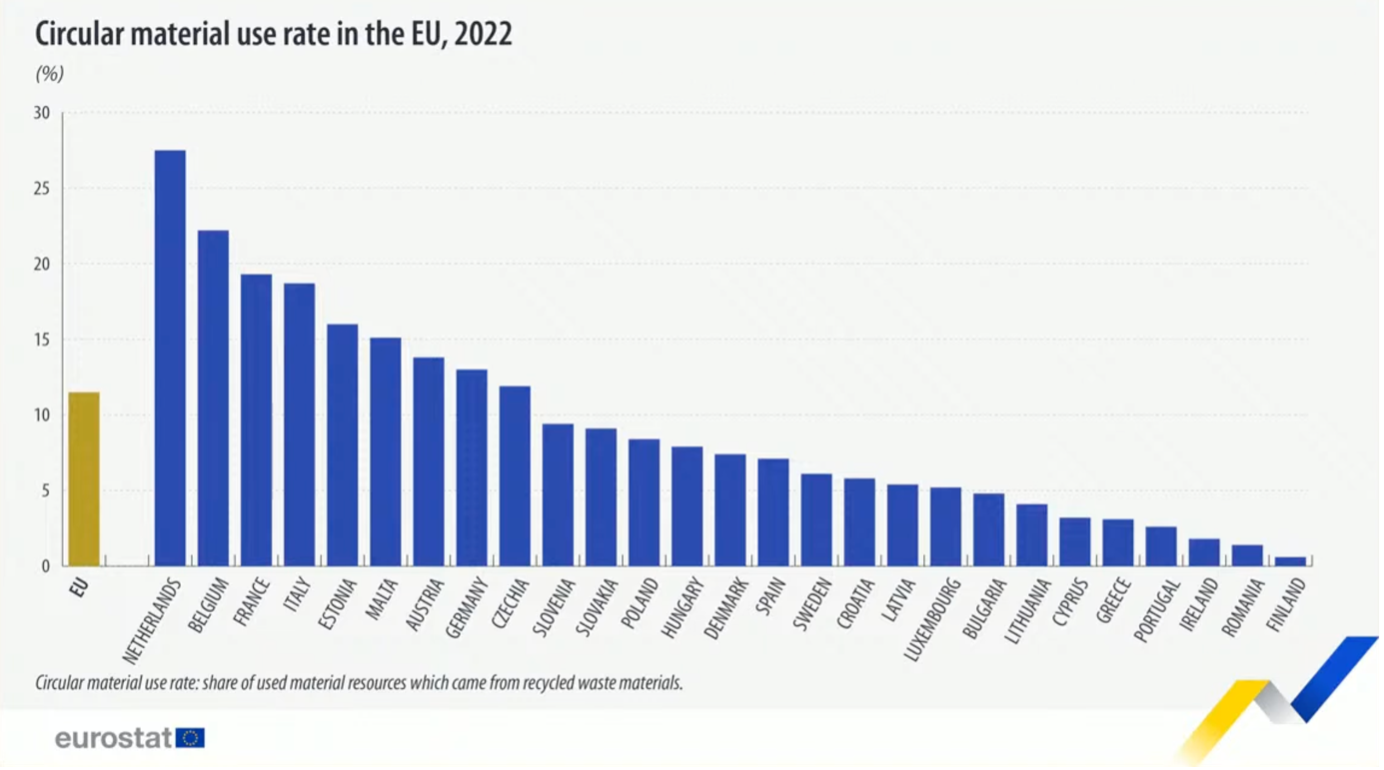
EU doubles down on circular economy
Meeting biodiversity and climate goals “won’t be possible” without a transition to a circular economy, the European Commission said, but the bloc still has some way to make investment accessible
Transitioning to a circular economy is the only way to meet climate and biodiversity goals, though more work needs to be done to create an enabling policy environment and mainstream investment, according to the European Commission.
Given that around 90% of biodiversity loss, and 50% of greenhouse gas emissions come from resource extraction and processing, the European Union has already started work on reducing its material footprint, introducing innovative policies and regulations.
Launched in 2020, the Circular Economy Action Plan is one of the “main building blocks of the European Green Deal”, Europe’s new agenda for sustainable growth.
Its objectives include making sustainable products the norm in the EU and focusing on the sectors that use most resources and where the potential for circularity is high. These include electronics and ICT, batteries and vehicles, packaging, plastics, textiles, construction and buildings, food, water and nutrients.
RENEWABLE INFRASTRUCTURE SUMMIT
12/03/24, London Stock Exchange | Asset owner knowledge sharing & due diligence
The Ecodesign Directive requires specific product groups to significantly improve their circularity, energy performance and other environmental sustainability aspects.
In 2021, the directive saved €120 billion in energy expenditure for EU consumers and led to a 10% lower annual energy consumption by the products in scope, according to EU figures.
“The current model of extracting virgin resources to produce something new, which is then thrown away, is not sustainable,” said Florika Fink-Hooijer, director general for the environment at the European Commission, during a recent EU event.
“We need to reduce our need for fresh resources and increase the re-use and recycling of products and materials. It’s a no-brainer.”
At a practical level, this is achieved through creating an “enabling policy environment” and scaling up investment.
“There’s always a cost to a transition,” Fink-Hoojier continued. “We need to direct more finance and investment to the circular economy.”
Public-private partnerships and blended finance vehicles that de-risk investments is one way to attract institutional capital.
To this end, the European Union alongside the European Investment Bank has developed a dedicated natural capital and circular economy initiative, with the aim of mobilising €10 billion of public money by 2030.
“Circularity will be the model for our economy,” she added. “It is also vital for the long-term competitiveness of the EU.”

Current state of play for institutional investors
As the degrowth/post-growth agenda gains traction in the EU, some large investors and financial institutions, as well as an array of niche players, are starting to incorporate circular economy themes into their portfolios.
The degrowth/post-growth movement argues that living within environmental boundaries requires the scaling down of harmful, resource and energy intensive economic activities, a reduction in consumerism, and a restructuring of institutions – from welfare systems to financial markets – to make them growth independent.
Circular economy policies are the most mainstream way of implementing degrowth/post-growth ideas.
Triodos is perhaps the largest private financial institution to fully embrace the de-growth/post-growth agenda.
Net Zero Investor previously reported that London CIV is looking at investments in companies that support circularity by having a neutral or positive impact on biodiversity, consuming fewer resources, producing more renewable resources, repurposing products or extending their useful lives, whilst offering greater social and economic inclusion.
Similarly, AXA IM has a circular economy equity strategy theme, allocating capital to sustainable textile industries and waste management companies where household waste is being processed to provide new alternative fuels.
However, one key obstacle to more investment is a lack of investable projects.
Over the last five years, the European Investment Bank - one of the world’s biggest circular economy investors - has financed 118 circular economy projects, for a total of €3.4 billion.
“One problem is that we do not see a lot of projects,” said Ambroise Fayolle, European Investment Bank (EIB). “There are an increasing number in industry, especially food packaging, and in cities, but it’s not enough. This is very difficult to mainstream.”
Successful examples of projects recently financed by the EIB include a company that develops high-tech sorting lines to increase recycling in Belgium and the Netherlands.
Fayolle said that public procurements – a massive source of capital – should do more to focus on sustainable projects and not just go after the cheapest price points.
Indeed, sustainable products are often more expensive than their environmentally harmful counterparts, which is a major disincentive for circular economy investments.
For example, it’s still $72 a tonne cheaper to produce virgin plastic than recycled plastic, according to World Bank figures. Although recycled plastic has quadrupled in the last 20 years, it still accounts for less than 6% of the 460 million metric tonnes of plastic produced each year.
“The concept of a circular economy appears to be reaching a tipping point, but progress is slow: current management practices are not in sync with circularity, starting from financial and accounting tools and approaches,” said Patricia Noble, sustainability and circular economy lead at Capgemini.
Key to understanding why organizations are still struggling to launch and scale circularity is “the concept of value and how the current dominant way of thinking about value is linear”, she added.
Despite growing interest in circular economy principles, at a global level, recycling has actually stepped backwards, dropping from 9% to 7% of all materials produced in three years, according to the Circularity Gap report.
“Price competitiveness is part of the problem,” said Valerie Hickey, global director of environment, natural resources and blue economy at the World Bank. “We also need more regulation and fewer harmful subsidies.”
Harmful subsidies were to blame for 14% of illegal deforestation in 2023, Hickey added.
“The good news is that progress can be made,” said Hickey. “20 years ago, solar panels were considered a highly risky technology, yet they have since been mainstreamed. If we’re going to bend the linear economy towards circularity, we must have access to capital markets. We need to move the big money.”




